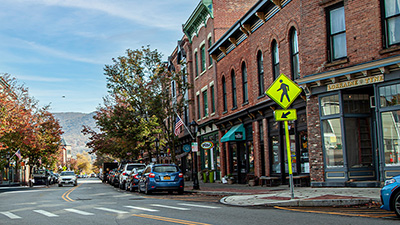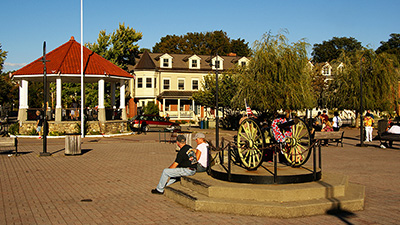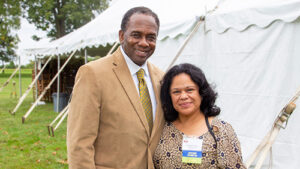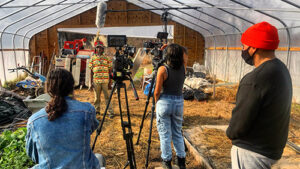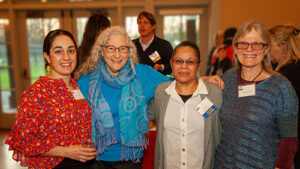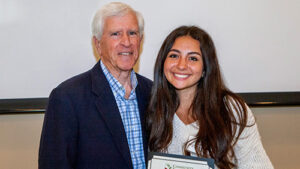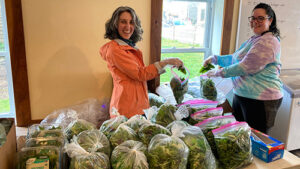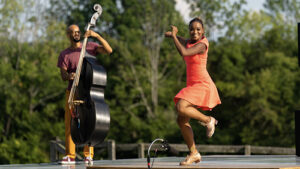Grant Opportunities
Nuvance Health Taconic IPA Science Education Grants
Deadlines:
December 15, 2024. Awards will be announced in January 2025.
ELIGIBILITY – All public, private, and parochial secondary teachers (Grades 7-12) in all New York State licensed and certified schools in Dutchess, Orange, and Ulster Counties.
APPLICATION PROCEDURES – Online grant application. Click here to access the Grants Portal.
EVALUATION AND SELECTION PROCESS – All applications will be reviewed by the NuvanceTaconic IPA Committee of the Community Foundations.
Funding priority will be given to requests that are well-written, for equipment that is durable and will serve a large number of students. Requests that include information relative to how the lessons using the equipment will positively impact students, spur their interest in science related careers and provide a strong educational foundation for college level curriculum will receive special consideration. Requests that note equipment sharing across schools within the same district are also encouraged.
AWARD AMOUNTS – Grants will be awarded in amounts ranging from $500 – $1,000.
COOPERATIVE VENTURES – Applications/requests in excess of the $1,000 limit will be considered for cooperative ventures across different fields/disciplines that affect a large number of students.
NOTIFICATION – Applicants will be notified in January 2025.
FINAL REPORT – An online report accounting for expenditure of grant funds must be submitted to the Community Foundations no later than June 30th of the year following the award. This report should also include information on how the equipment purchased enhanced learning opportunities in the classroom laboratory. Unused funds must be returned to the Foundation.
OWNERSHIP OF EQUIPMENT – Equipment purchased with grant funds is deemed to be the property of the school.
EXAMPLES OF PAST PROJECTS FUNDED:
Without suggesting the kinds of activities to be funded, the following are examples of projects funded in recent years:
Matt Helffrich, High Meadow School: 3D Printer for Middle School Science
Funds will be used to purchase a 3D Printer- Original Prusa i3 MK3S+ for 7th grade Physical Science class. Students will learn about matter and energy while practicing the iterative engineering design practice where students solve problems by learning from past prototypes thus refining their solutions. Students in grade 7 who are studying physical science are the initial target for using a 3D printer. This device will enhance the study of matter and energy by allowing them to create models as they learn about volume and density. When they study buoyancy, students will create models that float and explore the relationship between mass and displacement. Students can create models of simple machines, atoms, and molecules when they study chemistry, and allow students to apply this technology to the engineering process.
Elyse Joy, Orville A. Todd Middle School: Don’t Bother Me Mom, I’m Learning!
This grant will purchase a game compatible desktop, monitor, and game license. Years ago, Elyse read a book titled Don’t Bother Me Mom, I’m Learning when Smartboards and Chromebooks first arrived in their schools. The types of jobs that will be available for students when they graduate are jobs they can’t even conceive of yet. A few years ago, the thought of spending or asking for money for video games was unthinkable. Today students engage in learning complex problem solving, physics, collaboration, and risk taking, while “playing” video games. Students who join their eSports team have chances for college scholarships and are developing the skills they need to be successful in a competitive digital job market. There are many students who want to join eSports teams, but don’t have the equipment or the ability to get transportation to and from events. This grant will continue to help bring practice in-house and build on the funds they received last year for a Nintendo switch and some games. This year, they would like to add a gaming computer and monitor to allow access to some of the games that colleges are recruiting for.
Nicholas Malgieri, Wallkill High School: Compound Light Microscopes
Funds will support the purchase of 4 compound light microscopes to begin the process of replacing their microscopes that are about 20 years old and no longer function. At the moment they have a group of 4 students all sharing one functional microscope. As they begin to purchase more microscopes, students will have more time operating this important piece of science equipment and become more proficient at its use. In Regents Living Environment and AP Living Environment, they use microscopes to bring the cell unit to life. Students bring in pond water and try to identify the life they see under the microscope. Students look at their cheek cells and skin cells and compare it to Elodea. In Forensics, students examine their own hair to learn about the characteristics of medulla. They compare human hair and animal hair under the microscope. Then they use the microscope to match hair samples at the mock crime scenes to the different samples collected from the teacher suspects. In Human Anatomy, they look at several samples throughout the year including bones, blood, nerve, and muscle tissues. Students use microscopes to make the concepts they learn in class more exciting and more real to life.
Tricia Muraco, Arlington High School: Suture Practice Kit for the New Anatomy & Physiology Course
124 students enrolled in 4 sections will be able to utilize suture practice kits in their Anatomy and Physiology courses. Funds will support the purchase of 31 kits plus 2 extra kits for teachers to use in demonstrations. These suturing kits will be used during the Integumentary unit, and before each dissection that they perform.
Andrew Nikola, Wappingers Jr. High School: Mission Possible: Pushing Beyond Limitations!
The Class VR system, designed specifically for classroom use, offers an unparalleled opportunity to transform science education by creating immersive, interactive, and engaging learning environments. With support from his grant, they aim to integrate VR glasses into their science curriculum, benefiting students across various grade levels. The purchase of this equipment will allow students to expand their reach in the world of virtual reality to bring experiences to the students in the classrooms and show the endless possibilities that this technology suggests. Our world is moving at a fast-paced speed with technology, and they are moving towards acquiring more of this equipment with your support. This allows teachers to bring those science experiments and phenomena into the classroom in a real-life setting.
Christine Pizer, Poughkeepsie High School: Reducing Human Impact Through Clean Energy
Funds will purchase Solar USB Kits, Maker Tape and Paper Circuit Kits. The students will be exploring clean energy solutions that will be added to their “Green Home” design. They will be creating a 3-D version of a home with cardstock paper. They will design the interior and exterior with sustainability in mind. These tools will provide the opportunity to provide actual power for those homes without the use of fossil fuels. Many students are also enrolled in Financial Algebra and their Capstone project will be altered slightly to connect with this sustainability theme. Specifically, as they look toward their future after high school through the college and career paths, they will be required to gear their research into the “green” fields. When they create budgets for their homes and general expenses, they will be required to incorporate sustainable practices.
Gwen Saylor, Arlington High School: Programmable Microbits for Physics Maker Space
This grant will purchase 7 Crazy Circuits Bit Board Kits that will allow students to create programmable and interactive projects involving motion, sound, or lights. The Micro:bit is a small portable inexpensive computer that can be used with a host of accessories including science sensors such as accelerometers, light detectors, conductors and other inputs to control speakers, servos and light emitting diodes to provide students with a flexible project-based learning tool. The Crazy Circuits Bit board kit can be integrated with everyday materials such as Lego bricks and basic craft materials to create interactive projects that connect physics concepts with computational thinking. The Crazy Circuits Bit Board Kit is a flexible learning environment that allows content to be differentiated for student experience levels.
Michael Stolarski, Poughkeepsie High School : Up in the Air to a PART 107
This grant will purchase an Emax Tinyhawk Team Startup Package to make drones accessible for students in physics and STEM classes. These will be used to understand Newton’s Laws, forces both balanced and unbalanced that act on an object. They can also be used to teach principles of flight in STEM classes, as well as prepare students for an FAA Part 107 certificate if they want to pursue it.
Jonathan Zimmerman, Mount Academy : Preserved Specimens for Biology Class
This grant will purchase preserved bullfrog and rat specimens for dissection in Biology class.
Dissection of preserved animal specimens is a time-honored method of teaching zoology. It is the ultimate hands-on lab experience in a high school. Working in pairs, students meticulously cut open and dissect the specimen, using a detailed guide, diagrams, and text. They will utilize the specimens over several days to maximize their learning.

